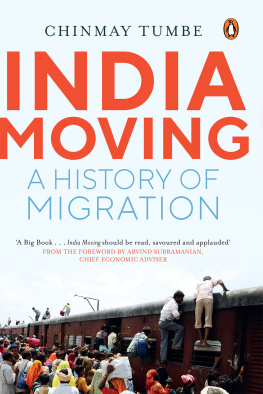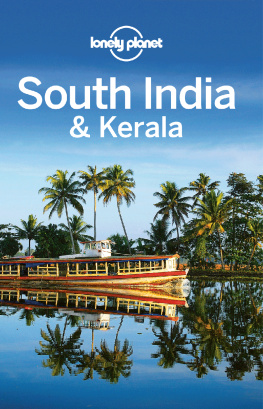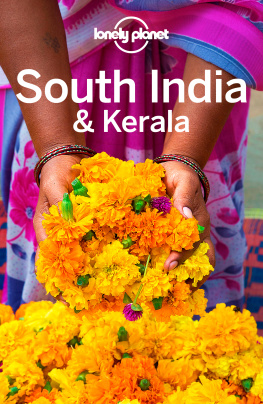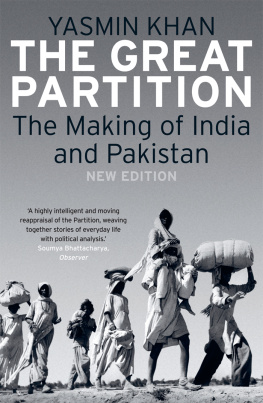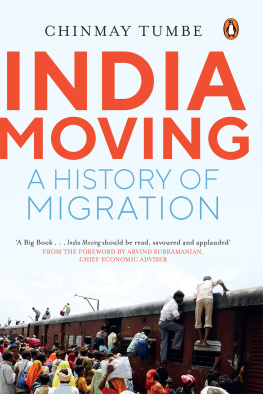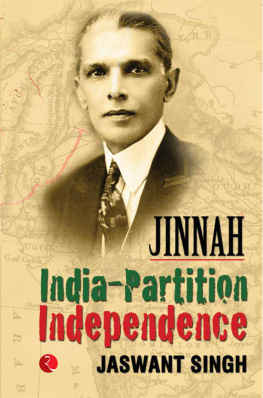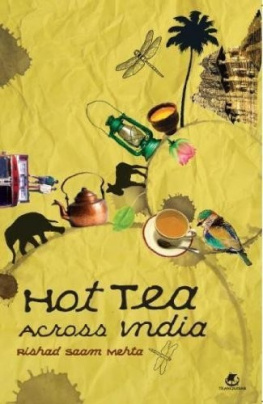Foreword
I am delighted to be writing this foreword for one of Indias brightest and rising young economic scholars, Professor Chinmay Tumbe of the Indian Institute of Management Ahmedabad. India Moving is terrific in many ways. It is the kind of book that I would want to write and read, and dip into and refer to from time to time. But those are not the only reasons for me writing this foreword. Nor are my motives sullied by the obligation of reciprocity: Chinmay, who I got to know serendipitously, contributed wonderfully to a chapter in the Economic Survey of 201617. The reasons for my enthusiasm are different.
There is a certain kind of scholarship that young Indian academics, especially in economics, have shied away from. A major reason is the suffocating straitjacket of the discipline as it is currently practised in prestigious universities of the United States. Increasingly, the rewards are confined to, and conferred upon those, practising a certain narrow conception of scholarship. This privileges the asking and answering of small questions because only these can be answered through methods that the high priests of the Academy certify as rigorously kosher. As a consequence, Dismal Science risks becoming Small, Lesser, Wannabe Science.
Against this background, it takes a certain confidencechutzpah evento escape the choke of a throttling Academy, especially for someone as professionally young as Chinmay Tumbe, and for someone who practises his vocation in India, far away from the academic centres of gravity. But make no mistake, India Moving: A History of Migration is a Big Book, taking on nothing less than the history of national and international migration from, to and within India over the last several centuries. Just the daring of, and defiance implied in, the attempted project deserves resounding praise and wide readership.
But Chinmay does much more. He skilfully combines economics, history, vignette, anecdote and the odd literary reference to lay out when, why and how Indians have moved over the millennia. The book is backed up by years of serious scholarship but avoids both narrowness and dreary denseness. It is animated by curiosity, wonder and a sense of joyful exploration. Chinmay has clearly had fun writing India Moving, and it shows.
The erudition is worn lightly and Chinmays wide reading leavens the exposition. One learns a lot from the book. How big is the Indian diaspora? What are the hotspots of emigration in India? How did Indians settle in the French territory of Runion or find their way to the distant Pacific island of Fiji? What is the background behind Sikhs settling in Latin America? How did Indians first go to the Middle East? What were the associations between movements of particular communities and the building of economic capital? What are the two constants of the Indian diaspora? (Spoiler answer: the use of water, not toilet paper, to perform ablutions, and the pressure cooker as the ubiquitously reliable kitchen aid, and more recently, how has migration changed within India and how have remittances affected development within the country?)
The comprehensiveness of coverage is impressive: it seems that no internal displacement, no migration-related conflict and no significant international migration over the last century has escaped the authors attention. A not insignificant contribution of the book might therefore be to serve as a treasure trove for others who wish to explore in greater detail one or more of the numerous instances of migration catalogued in the book. India Moving may well be the starting point and provocation for numerous PhDs.
India Moving should be read, savoured and applauded. I hope it will encourage and embolden other Indian economists to emulate this example of undertaking rigorous but accessible and interesting scholarship. I cannot recommend this first effort from Professor Chinmay Tumbe highly enough.
Arvind Subramanian
Chief Economic Adviser
Government of India
1
Indian Diversity and Global Migrations
India is a geographical and economic entity, a cultural unity amidst diversity, a bundle of contradictions held together by strong but invisible threads.
Jawaharlal Nehru
Why is India such a diverse country? Why do Indians speak so many languages, celebrate a number of festivals, devour assorted pickles and buy a variety of fairness creams?
Is it because of successive waves of migration which, for example, explain the stunning human diversity seen in a New York subway train? Or is it a diametrically opposite reason: one of group isolation preserved over a long time and forced into unification only in recent times? After all, Papua New Guinea, a small country of less than 10 million people in the Pacific Ocean, hosts more languages than India, a country of over a billion people, as human traits evolved separately with minimal contact between the islanders.
It is important to recognize these two separate routes to diversity observed in any region: one through migration and the other through isolation and the lack of migration. In this context, a popular and enduring view of India is that it was, and is, a land of low spatial mobility, that it was essentially a land of around half a million self-sufficient villages lying undisturbed until the recent big bang of modernity. In this view, people eventually died in their villages of birth. According to one historian in the 1960s, a village looked outside for little more than its salt, its spices, the fine cloth for its holiday clothes, and the coin in which it pays its revenue. The idea of spatial mobility in Indian history was confined to the occasional pilgrim, merchant or warrior on a particular mission and little else.
This view of low spatial mobility in Indian history is seriously questionable. Not only has India witnessed some of the worlds largest episodes of voluntary and involuntary migration, but it is also unique in currently sustaining considerable immigration, internal migration and emigrationall three at the same time. A reading of Indian history, as shall be seen in this chapter, reveals that migrations, internal and external, and events before the late 19th century had already created a unique amalgamation of cultures that can be observed in India today. The past century and a half, however, was critical in reshaping existing diversities within, and more importantly, exporting these diversities outside the subcontinent, a fascinating phenomenon that informs the rest of this book. But we must begin by asking a more fundamental question: Who exactly are the Indians?
Brownian Motion

